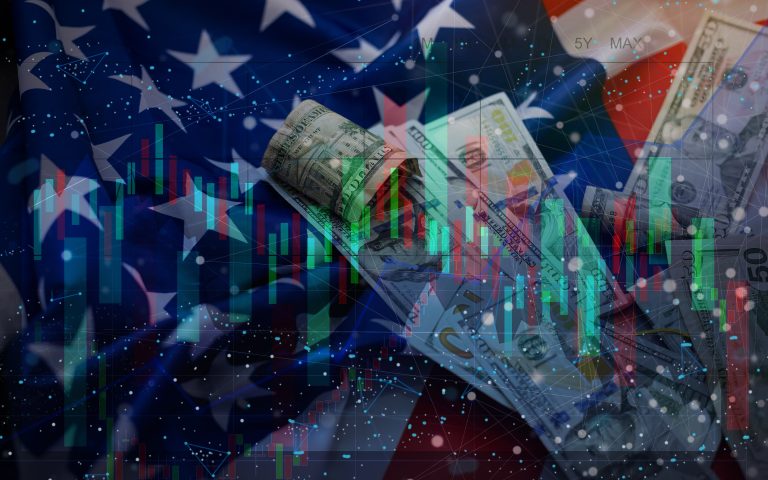Day trading may appear exciting from the outside instant decisions, fast profits and working from any internet-connected location , yet every prospective trader needs to ask themselves one important question before beginning this adventure: How Much Money Do You Need to Start Day Trading?
Answering that question depends on various variables, from your markets of trade and strategy choices, as well as risk tolerance. Day trading should never be seen as a get-rich-quick scheme – rather, it requires planning, education and starting capital in order to build an established trading business. Before making your initial trade it’s vital that you fully comprehend its rules, risks and resources necessary for creating a solid base from which you’ll move forward successfully.
What Day Trading Actually Entails?
Day trading involves purchasing and selling financial instruments like stocks, options, futures or forex within one trading day with the goal of taking advantage of short-term price movements rather than holding assets over an extended period. Successful day traders use market volatility to their advantage by entering and exiting multiple positions per day.
Day trading requires focus, discipline and emotional control due to its rapid nature. It should not be taken as gambling; rather it requires skill that includes analyzing charts, patterns and technical indicators. Even professional traders occasionally incur losses. Therefore knowing how much capital you require before beginning is more than about affordability: It also ensures risk mitigation and long-term sustainability.
Legal Minimum Requirement for Day Trading Stocks in the U.S.
U.S. law offers an objective benchmark when it comes to day trading funds: according to Financial Industry Regulatory Authority (FINRA), traders who execute four or more day trades within five business days in their margin account qualify as “pattern day traders,” meaning your brokerage account must contain at least $25,000 equity to remain as such a pattern trader.
Minimum account balance requirements do not exist as mere suggestions — they exist as rules that ensure traders remain protected from excessive risks by providing enough capital to cover potential losses. When your balance falls below $25,000, brokers typically restrict day trading until its balance returns above this minimum threshold. Regulation exists in order to protect traders against excessive risks while assuring sufficient capital can cover potential losses.
If your capital requirements fall under this threshold, trading may still be viable; however, using cash rather than margin accounts limits how frequently and frequently. Some traders turn to alternative markets like forex or cryptocurrency trading instead; capital requirements tend to be lower here but risks and volatility could still be substantial.
Realistic Strategies for Raising Capital Beyond the Minimum Requirement
Although $25,000 is the regulatory minimum required to day trade US stocks, most professionals believe you’ll require at least $30,000-50,000 in your account to effectively trade stocks day trading. Transaction fees, margin requirements and losses quickly consume any funds available; starting out with this larger sum gives more room and offers greater safety against market fluctuations.
However, how you use it matters too: beginners should only risk a small percentage of their total capital per trade (usually no more than one or two percent) to protect their account from large drawdowns while making progress along the learning curve easier.
Do not panic if your starting out without much capital to put toward trading; many traders begin their venture by practicing using demo accounts or simulation trading tools such as Free Trades to Learn platforms that simulate market conditions without risking real cash, helping develop strategies and build confidence without taking real risks with actual capital commitment.
Beginning Small with Forex and Crypto
If you don’t wish to invest tens of thousands of dollars, forex and cryptocurrency markets offer more accessible entry points. Many forex brokers allow accounts to be opened with as little as $100-500 deposits while cryptocurrency exchanges do not set minimum investment thresholds at all.
Small accounts present their own set of unique challenges. It can be more challenging for smaller accounts to effectively manage risk and generate meaningful profits without using excessive leverage, which amplifies both gains and losses. It may still be worthwhile starting small; just use it primarily as an educational experience rather than hoping for instantaneous gains.
Why Capital Requirements Matter More Than You Think?
When asked How Much Money Do You Need to Start Day Trading? “, what you really mean is, “How much capital can I afford to risk without endangering my financial stability” Day trading can be unpredictable and even the most experienced traders encounter losing streaks from time to time; any money set aside as capital for trading should come from sources you can risk — not rent payments or savings meant for emergencies.
Capital also impacts your psychological comfort level as an investor. Without sufficient capital, traders with too little funds tend to overextend themselves in search of quick gains resulting in emotional trading with devastating losses. With sufficient funds, traders are better able to trade rationally according to strategy without making desperate decisions based solely on emotion.
Brokers each have unique requirements regarding margin, leverage and account maintenance; selecting one which best meets your financial situation is key for long-term growth and to avoiding failure. Do your research beforehand as knowing these details could make all the difference between disciplined expansion and potential loss.
Read Also : Why Is Insider Trading Illegal? The Laws, Ethics, and Real-World Cases
Build Your Skills Before Risking Real Money
Many novice traders may be tempted to dive right in, but doing so without first investing in education may prove costly. Instead, invest in your future by learning to read price charts, understand indicators, and practice executing trades simulated environments.
Participating in training programs or online classes that offer Free Trades to Learn gives you first-hand experience in how markets move. You will learn to identify trends, manage stop-loss orders and analyze risk without risking capital – this practical learning approach builds both discipline and patience for real trading situations.
Even when beginning live trading, start small. Use micro positions, take fewer trades, and focus on consistency over fast profits. Over time as your confidence and accuracy grow, gradually scale your capital and trade sizes responsibly.
Understanding the Costs of Day Trading
Money required for day trading goes beyond simply maintaining an account balance, however. There are numerous financial considerations you need to account for: brokerage commissions, data subscription fees and software licensing costs all add up – you’ll require fast computers with stable internet connections along with charting or execution software as part of this investment plan.
Although many brokers now provide commission-free trades, there may still be hidden expenses such as bidding-ask spread or platform fees that add up over time. Professional traders approach day trading like any business — budgeting expenses carefully while keeping records and tracking performance to ensure long-term profitability and staying realistic about returns. Following such disciplined and realistic approaches can keep returns more achievable over time.
Capital and Risk : Strategies to Effectively Approach
If you are serious about day trading, think of your capital as your working inventory: an essential tool in creating income. Just like running any successful business, its success relies on managing its resources wisely – starting out with enough to trade within your risk limits comfortably, while not overextending yourself with borrowed money is paramount to its success.
The best traders don’t take risks at every opportunity; rather, they use capital wisely and preserve it long enough to hone their craft. Focus on learning your edge rather than making huge gains overnight; use Free Trades to Learn as much as possible for practice to build your skills before gradually transitioning into real trading once it feels appropriate for you.
Conclusion
How Much Money Do You Need to Start Day Trading? For U.S. stock transactions using margin accounts, at minimum $25,000 may be necessary — though the exact sum depends upon individual goals, strategies and financial readiness; most beginners would benefit most from starting small through practice trading simulation.
Day trading can be both rewarding and challenging as an investment method, necessitating adequate capital, education, discipline and risk management to secure long-term success.
Before risking real money, take time to get acquainted with trading. Sign up for Free Trades to Learn and discover how you can safely, legally, and strategically trade before risking real cash. Building knowledge first will prove the most worthwhile investment of all in your trading journey!





